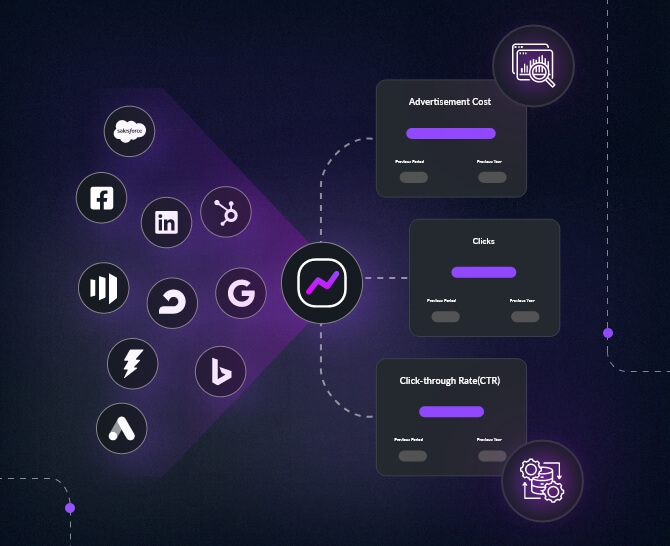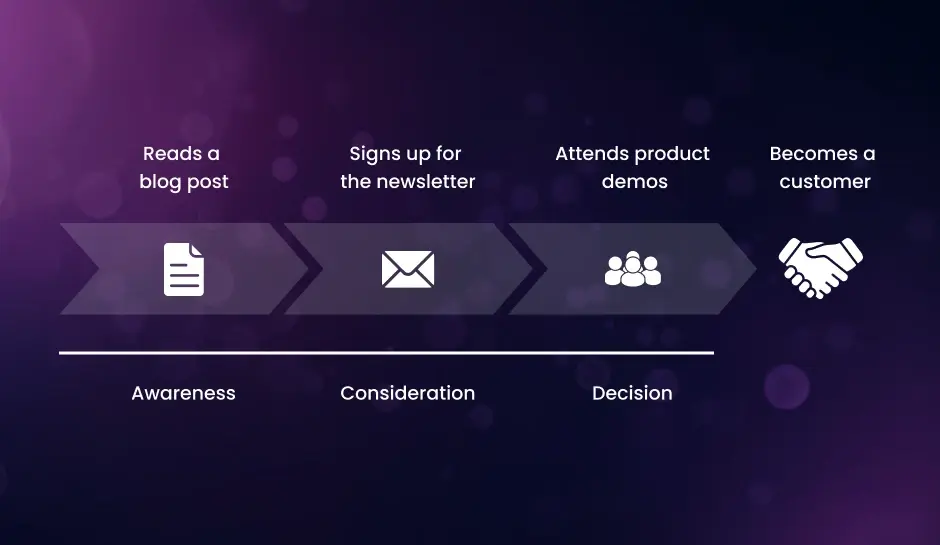
The Ultimate Guide to Data Integration
In this guide, we will talk about what data integration is, how it can help businesses, challenges, and use cases.
In a post-covid world, where digital channels have become the primary source of interaction between businesses and their customers, the importance of data integration has grown multifold. It enables businesses to obtain a complete view of their data and gain insights which would be impossible when organizations store data in silos. So, what is data integration, and what are its benefits? Let’s explore these and more.
What is Data Integration?
As organizations collect data from different sources and in different forms, they need to combine them and create a unified and comprehensive view of the data. Data integration is the process of combining raw data. Here, data from disparate sources—including databases, applications, files, and APIs—are brought together and consolidated to generate a single view, and create meaning out of raw data for different business processes. The primary goal of data integration is to ensure the raw data’s accuracy, consistency, and relevance.
How Does Data Integration Work?
Data integration is a multi-step process that works depending on the data sources, the tools and technologies used, and the type of integration an organization needs. Here is the basic step-by-step guide to data integration that most organizations follow.
- Identifying Disparate Data Sources
- Data Extraction
- Data Transformation
- Data Mapping
- Data Loading
- Data Cleaning and Validation
- Data Monitoring
The first step to data integration is identifying disparate data sources. These sources can include databases, files, web services, cloud-based systems, or other data sources.
Once data scientists identify different data sources, they extract data from different sources. Data is extracted using different processes, including SQL queries, APIs, or other methods relevant to the source and data type.
This is one of the most vital steps in the process. The extracted data is transformed to create a common, easily integrable format. Different data types are converted at this stage into a single format, standardized, and normalized to achieve a unified view.
Post data transformation, organizations move to the next stage – data mapping. Data scientists turn different data elements into a common schema in this stage. This step maps the data into a common model.
The data is now in a common format and has been mapped, and it is ready for loading into a target system. The target system can be a data warehouse, data lake, or other data repositories. ETL (Extract, Transform, Load) tools or other data integration software help in data loading.
Since businesses collect from different sources, there is a chance of duplication and lack of accuracy. Data cleaning and validation help overcome this challenge, improving accuracy and consistency.
Data integration isn’t a one-time gig but an ongoing process. Hence, it is important to monitor the data and the process to ensure the target systems are fed with accurate and up-to-date data. Implementing processes such as data governance and data lineage helps in the endeavor.
Benefits of Data Integration
As organizations compete in a fast-changing business environment, quick and accurate decision-making based on information is vital. They need easy access to accurate and up-to-date information on their customers, competitors, and emerging trends in the market. With real-time data integration, business leaders can access the most accurate and up-to-date data that gives them actionable insights, agility, and real-time intelligence to make the most data-driven decisions. Here are some of the most widely accepted benefits of data integration
- Improves data integrity and data quality
- Breaks data silos, making actionable data easily accessible
- Facilitates fast connections between disparate data stores
- Seamless knowledge transfer between systems
- Improves team collaboration and facilitates quicker decisions
- Offers real-time business insights and intelligence
- Increases business efficiency and improves ROI
How do Businesses Use Data Integration?
Data integration improves the process of decision-making, gaining insights and driving innovations. Here are some of the reasons why modern businesses consider data integrations critical and use this method to improve their process –
- Business Intelligence
- Data Warehousing
- Customer Relationship
- Supply Chain Management
- Data Science
Data integration improves an organization’s understanding of its customers, market, and competition. It creates a single, comprehensive view of data to identify trends, patterns, and opportunities in the market.
Businesses need to store large volumes of data in warehouses. Data integration simplifies this process by storing data from different sources in a centralized location, easily accessible to different teams.
Data integration is one of the driving forces behind customer relationship management (CRM) systems. It improves customer relationships by offering businesses deeper insights into their customers’ needs and behaviors. It facilitates growth in customer engagement and loyalty.
Data integration consolidates data from different supply chain systems and inventory management platforms. With this, businesses can gain better visibility into their supply chain, thus improving their operations and reducing costs.
Data science is one of the key drivers of the modern business world. Data integration is a vital part of data science and serves as a springboard for businesses to use data science to their advantage. It can help them build models and algorithms to solve complex business problems.
Data Integration Examples and Use Cases
Organizations leverage data integration in different ways depending on their business model and the industry. To understand this better, let us look at some of the use cases of data integration in the industry –
- Marketing
- Healthcare
- Supply Chain Management
- Customer Relationship Management
To create more powerful and targeted campaigns, marketing agencies integrate data from different sources, such as web analytics, customer surveys, social media, and CRM tools.
In the healthcare industry, data integration allows institutions to access patients’ medical records, such as electronic medical records, medical devices, and patient-generated data on a single dashboard. It is helping improve diagnoses, treatments, and outcomes.
Integrating data from suppliers, distributors, and inventory management systems helps streamline supply chain management. It optimizes processes, lowers costs, and reduces delivery times.
Integrating data from email, social media, and customer feedback helps organizations improve customer engagement and loyalty. They can spot early dissatisfaction among customers and take corrective steps.
Challenges to Data Integration
Data integration holds a lot of potential for organizations. However, it is a complex process that requires detailed planning and execution for success. There are several barriers on the way that businesses need to overcome to implement data integration. Below are the biggest challenges to data integration.
- Quality of Data
- Data Governance
- Technical Roadblocks
- High Costs
- Cultural Challenge
The success of data integration depends on the data quality. Since data is collected from varied sources, it must be compatible and accurate. However, data quality tends to vary between sources, resulting in inconsistencies and inaccuracies. It poses a big threat to data integration.
With data integration, businesses can face data ownership, security, and compliance challenges. The absence of guidelines and policies for data governance can make the entire data integration process null and void.
As mentioned earlier, data integration is a complex process, and businesses that lack technical expertise can face challenges with data access, extraction, transformation, and loading.
Data integration is expensive, especially for organizations that deal with large volumes of data or complex data structures. Additional investments need to be made in hardware, software, and human resources to support their data integration efforts.
Data integration, to be successful, needs collaboration and coordination between different teams and departments in an organization. In many cases, businesses need to address cultural challenges for this initiative to be successful.
How to Integrate Data?
Integrating data from different sources requires meticulous planning and execution. Organizations use different methods for data integration depending on their needs and data sources. Here is a basic four-step process for data integration
Step 1: Shortlisting Data Sources
Organizations must identify data sources they need to integrate. It is easier said than done, as organizations collect data from different channels and store them in different formats. For example, an automobile manufacturer selling different segments of vehicles must choose data sources based on the target audience based on their buying behavior and spending prowess instead of integrating data from all channels.
Step 2: Choosing Data Integration Method
It is important to define data integration needs and choose a method suited to them. There are different methods for data integration, including Extract, Load, Transform (ELT) (the most popular method), ReverseETL, Change Data Capture, etc. Organizations must also consider the costs, logistics, and manpower required for each method.
Step 3: Choosing The Right Extraction Size
Businesses with large databases must choose the right size for their data extraction process. Extracting the entire data may overwhelm the resources and delay the process. It is important to rightsize the efforts for maximum gain at minimum cost.
Step 4: Connecting Data Sources
Different data sources have their APIs or connectors; for data integration to be successful, the different data sources need to be connected. While integration tools are easily available, in some cases, organizations may need to invest in custom integration.
Types of Data Integration
A. Data Warehousing
When it comes to data integration, one approach that stands out is data warehousing. This approach involves consolidating data from different sources into a central repository, usually a data warehouse. Data warehousing provides a unified view of an organization’s data, making it easier to analyze and extract valuable insights.
Advantages of data warehousing include
Improved decision-making capabilities
Enhanced data quality and consistency
Scalability and flexibility to handle large volumes of data
However, data warehousing also comes with its fair share of challenges. Some of these challenges include:
Complex and time-consuming implementation
Data compatibility and integration issues
Costs associated with setting up and maintaining the infrastructure
B. Data Migration
Data migration plays a crucial role in integrating data from one system or platform to another. It involves transferring data from legacy systems or outdated databases to new, more efficient ones. This ensures that data remains accessible and useful even when transitioning to new technologies.
For successful data migration, it is important to:
Define clear goals and objectives
Plan and organize the migration process
Validate the accuracy and completeness of transferred data
C. Data Synchronization
Data synchronization is a vital aspect of data integration that focuses on keeping data consistent and up-to-date across different systems or databases. It ensures that changes made in one location are reflected in all other relevant locations in real-time.
Techniques and tools commonly used for data synchronization include:
Database triggers
Change data capture (CDC)
Master data management (MDM) systems
Data integration becomes seamless when data synchronization is properly implemented, allowing organizations to have accurate and synchronized data across various platforms.
Ensuring Data Quality in Integration
- Data Quality Overview
- Data Governance for Data Integration
- Master Data Management
Data quality plays a crucial role in the success of data integration. It refers to the accuracy, consistency, completeness, and reliability of data. Ensuring high data quality is essential for effective integration processes and to prevent issues that can arise due to poor data quality.
In the integration process, various data quality issues may arise, such as data duplication, inconsistency, missing values, and outdated information. These issues can significantly impact the overall integration process, leading to wrong insights, faulty decision-making, and inefficiencies in business operations.
Data governance principles are vital in ensuring data quality during integration. By incorporating data governance practices, organizations can establish guidelines, policies, and processes for maintaining high data quality standards throughout the integration process.
Integrating data governance with data integration involves defining roles and responsibilities for stakeholders involved in the integration process. It includes establishing data governance strategies, data quality standards, and data stewardship practices, ensuring seamless integration while maintaining data quality.
Integrating master data management (MDM) with data integration is crucial for achieving consistent and unified data. MDM focuses on managing and harmonizing core data elements across an organization, ensuring that data remains accurate and up-to-date throughout the integration process.
Leveraging MDM in data integration helps in resolving conflicts, standardizing data formats, and establishing a centralized repository for master data. This integration enhances the overall data quality, making it easier to achieve a comprehensive view of data and enabling reliable insights and analytics.
Data Integration Approaches
A. Cloud Integration
Exploring cloud integration as a modern approach
Cloud integration is a cutting-edge method of merging data from various sources and platforms. By utilizing cloud-based solutions, businesses can streamline their data integration processes and overcome traditional limitations.
Highlighting the benefits of cloud-based data integration
- Scalability
- Cost-effectiveness
- Flexibility
Cloud integration allows businesses to easily scale their data integration efforts to accommodate growth and changing requirements.
By leveraging cloud-based resources, organizations can reduce infrastructure costs associated with on-premises data integration solutions.
Cloud integration provides the flexibility to integrate data from diverse sources, including on-premises systems, software as a service (SaaS) applications, and third-party APIs.
B. Real-time Data Integration
Understanding real-time data integration and its advantages
In today’s fast-paced business environment, real-time data integration is becoming increasingly important. As data is generated and updated in real-time, businesses need to synchronize and integrate this data across various systems and applications instantaneously.
Use cases and challenges of real-time data integration
- Operational decision-making
- Customer experience
- Data consistency
Real-time data integration enables businesses to make accurate and timely operational decisions based on the most up-to-date information.
Real-time data integration ensures that organizations can deliver a seamless and personalized customer experience by accessing real-time customer data from multiple touchpoints.
Ensuring the consistency of data across various systems presents a significant challenge in real-time data integration. Businesses must implement robust data governance practices to maintain data integrity.
C. API Integration
API integration plays a crucial role in enabling efficient data exchange between different software applications. By utilizing APIs, businesses can establish seamless connections between disparate systems and enable the flow of data in real-time.
Integrating applications using APIs for efficient data exchange
- Efficiency
- Interoperability
- Automation
API integration simplifies the process of data exchange between applications, eliminating the need for manual data entry and reducing the risk of errors.
APIs provide a common language for different applications to communicate and share data, ensuring compatibility and interoperability.
API integration enables businesses to automate data synchronization and integration processes, improving efficiency and productivity.
Key features and capabilities to consider when selecting a tool:
- Compatibility with various data sources and formats
- Support for real-time or batch integration
- Data transformation and cleansing capabilities
- Data profiling and data quality management features
- Auto-mapping and schema matching functionalities
- Data governance and security measures
- Scalability and performance optimizations
Conclusion
Data integration offers many advantages to a business and helps them create better products and meet the customers’ fast-changing aspirations. Data integration can reduce overhead expenses and improve revenue and ROI. However, it is a complex process requiring organizations to plan and execute it methodically. Organizations must invest in technical expertise and effective data governance policies.
DiGGrowth—an AI-driven no-code marketing analytics platform—empowers marketers to integrate data in a matter of minutes across ad platforms, CRM, website analytics, and marketing automation platforms with its plug-and-play connectors. Know more here
Ready to get started?
Increase your marketing ROI by 30% with custom dashboards & reports that present a clear picture of marketing effectiveness
Start Free Trial
Experience Premium Marketing Analytics At Budget-Friendly Pricing.

Learn how you can accurately measure return on marketing investment.
Additional Resources
The Future of Marketing: How Predictive Lead and Account Scoring is Changing the Game
Can we, in this incredible marketing landscape driven...
Read full post postCloud Wars: A Comparative Analysis of Leading Cloud Vendors
How many companies are using cloud computing? Around...
Read full post postContent Marketing Attribution: Tracking Content Impact Across the Customer Journey
So, you've poured your heart into crafting the...
Read full post postFrequently Asked Questions
Data integration is the process of combining raw data from disparate sources, such as databases, applications, files, and APIs, to create a unified and comprehensive view of the data. It involves consolidating and transforming the data into a common format to ensure accuracy, consistency, and relevance.
Data integration follows a multi-step process. First, organizations identify the different data sources they want to integrate. Then, data extraction takes place using methods like SQL queries or APIs. The extracted data is then transformed into a common format, standardized, and normalized. Next, data mapping is performed to create a common schema. The transformed and mapped data is loaded into a target system like a data warehouse. Data cleaning and validation are carried out to improve accuracy, and ongoing data monitoring ensures the target systems receive accurate and up-to-date data.
Data integration offers several benefits to businesses. It improves data integrity and quality, breaks down data silos, facilitates fast connections between disparate data stores, enables seamless knowledge transfer between systems, enhances team collaboration, provides real-time business insights, increases efficiency, and improves return on investment (ROI).
Businesses use data integration in various ways to enhance decision-making, gain insights, and drive innovation. It supports business intelligence by providing a comprehensive view of data for identifying trends and opportunities. Data integration simplifies data warehousing by centralizing data from different sources. It plays a crucial role in customer relationship management (CRM) systems by offering deeper insights into customer needs and behaviors. Data integration also optimizes supply chain management by consolidating data from suppliers and inventory systems. Moreover, it empowers data science initiatives by serving as a foundation for building models and algorithms.
Data integration poses challenges that organizations must overcome. These include the quality of data, as data from various sources may have inconsistencies and inaccuracies. Data governance issues, such as ownership, security, and compliance, can also arise. Technical roadblocks may hinder data access, extraction, transformation, and loading. The cost of data integration, especially for organizations dealing with large volumes of complex data, can be a challenge. Cultural challenges related to collaboration and coordination between teams and departments may also arise and need to be addressed for successful data integration.
 Subhadeep Bhattacharjee
Subhadeep Bhattacharjee 

